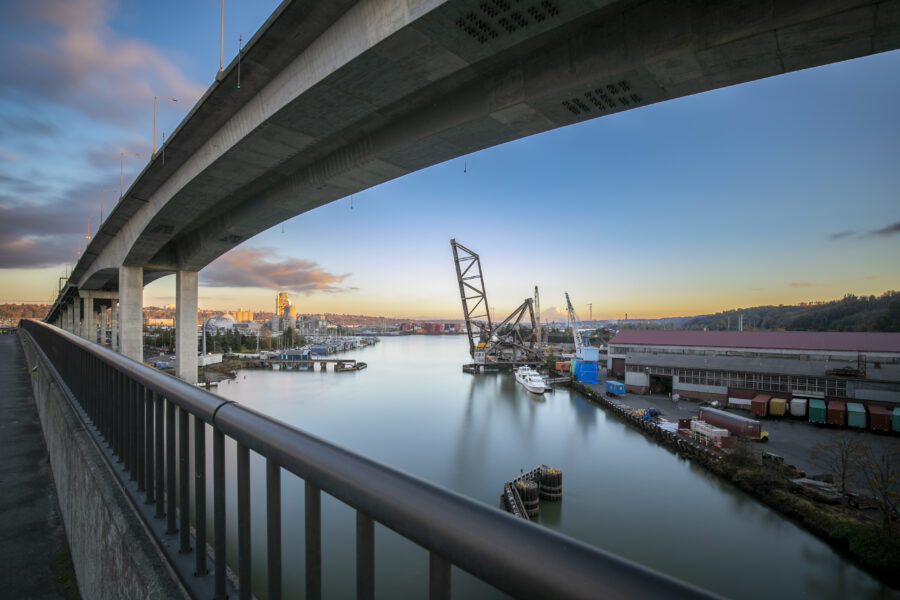Considerations for Innovative Project Delivery Methods

Introduction
Infrastructure owners are under constant pressure to deliver and maintain their assets safely and efficiently. Innovative Project Delivery methods such as Design-Build, Construction Manager/General Contractor, Progressive Design-Build, and Public-Private Partnerships can be viable project delivery options to provide the best value, accelerate delivery, and mitigate project risks compared to traditional Design-Bid-Build delivery. Selecting the right method depends not only on unique project characteristics but also on external market forces.

Evaluation Factors
Project-specific goals and objectives may provide owners with clear direction in selecting the preferred Innovative Project Delivery method. However, several factors must be evaluated to determine the optimal delivery method when this is not the case.

- Project Costs – Quantification of project risks and opportunities may lead to cost savings or reduce the likelihood of cost overruns or unnecessary contingencies being added by the contractor. When used correctly, alternative technical concepts for Design-Build and Public-Private Partnerships along with early contractor involvement for Construction Manager/General Contractor and Progressive Design-Build can help foster innovation and collaboration, improve the design, and mitigate risks, including those presented by third parties, constructability issues, and supply chain volatility. All these factors contribute increasingly more to the project’s overall cost at the time of bid and during construction.
- Schedule – Comparison of the overall project delivery schedules; accounting for the procurement of each Innovative Project Delivery method and the time savings realized; against Design-Bid-Build. Critical considerations include the alignment of schedules with the project or owner’s goals and objectives, the importance of schedule certainty, the feasibility of commencing construction before design completion, and the potential delegation of responsibilities to contractors (e.g., right-of-way acquisition, permitting, and utilities).
- Design – Analysis of the appropriate level of design completed by the owner prior to procuring a contractor. The level of design can be identified in terms of the potential incorporation of new technology, incorporation of novel design solutions, risk management considerations, the benefits of integrated design and engineering services, compliance requirements with regulatory bodies, and strategies for minimizing design liability risks. As part of this analysis, consideration should be given to the appropriate level of design before establishing a firm fixed price and schedule for project delivery.
- Procurement – Evaluation of a best-value selection that relies on qualifications against a low-bid selection based on constructing a fully designed, fixed-scope project. Key considerations include staffing limitations, owner oversight and control, design process control, competition encouragement, involving private sector teams, earlier contractor involvement to minimize impacts on landowners and third parties, stakeholder complexities, NEPA considerations, and permit acquisition efforts.
When an owner is evaluating these factors, it can be difficult to distinguish the advantages of one Innovative Project Delivery method over another. For example, it is reasonable to assume that the overall project schedule for Construction Manager/General Contractor and Progressive Design-Build could be the same. The Federal Highway Administration has created the Contracting Alternatives Suitability Evaluator (CASE) web tool to assist with quantifying these factors. This web tool assigns values to each factor to help determine what is the most appropriate delivery method utilizing characteristics and factors for a given project.
Risk Assessment
If the optimal Innovative Project Delivery method is still uncertain after this evaluation, a more comprehensive risk assessment that identifies risks and assigns cost values to them may be used to evaluate which of the delivery methods can best manage and allocate the project risks to determine the optimal delivery method.
The risk assessment is performed to help determine the opportunities and limitations of various delivery methods and how successful it will likely be in properly addressing the project risks. An even more detailed level of risk assessment should be performed during the procurement when contractor feedback can also be considered to ensure that project risks are being properly allocated and managed.
Industry Factors
Over the past few years, contractors are finding it increasingly difficult to accurately submit a fixed price and schedule based on a 30% design provided by the owner. Insufficient contingencies placed on risk items like geotechnical data, right-of-way acquisitions, permitting, and utility coordination have adversely affected some contractors. Other contributing factors include volatility in certain commodities (e.g. steel) and increased labor and equipment costs due to supply chain issues in the post-pandemic economy. As a result, contractors are now more selective about project pursuits and placing a higher contingency and risk premium on bids. However, these industry factors have also had an affect on risk mitigation strategies for Innovative Project Delivery.
Innovative Project Delivery methods often utilize risk pools, provisional sums, or risk reserves to help mitigate unknown project risks. Additionally, the incorporation of price adjustment mechanisms for commodities help to reduce unnecessary contingencies for fluctuations in material costs. The most notable trend in Innovative Project Delivery has been the rise of Construction Manager/General Contractor and Progressive Design-Build procurements. These Innovative Project Delivery methods provide for a collaborative design development between the owner and the contractor beyond the traditional 30% which can help contractors more accurately price their bids.
While Construction Manager/General Contractor and Progressive Design-Build can help address some of the competition and pricing concerns in the current market, they are not a panacea. A careful evaluation of specific project characteristics is critical in determining the optimal delivery method.
Read the next blog in this series: Preparing for Construction Manager/General Contractor and Progressive Design-Build




